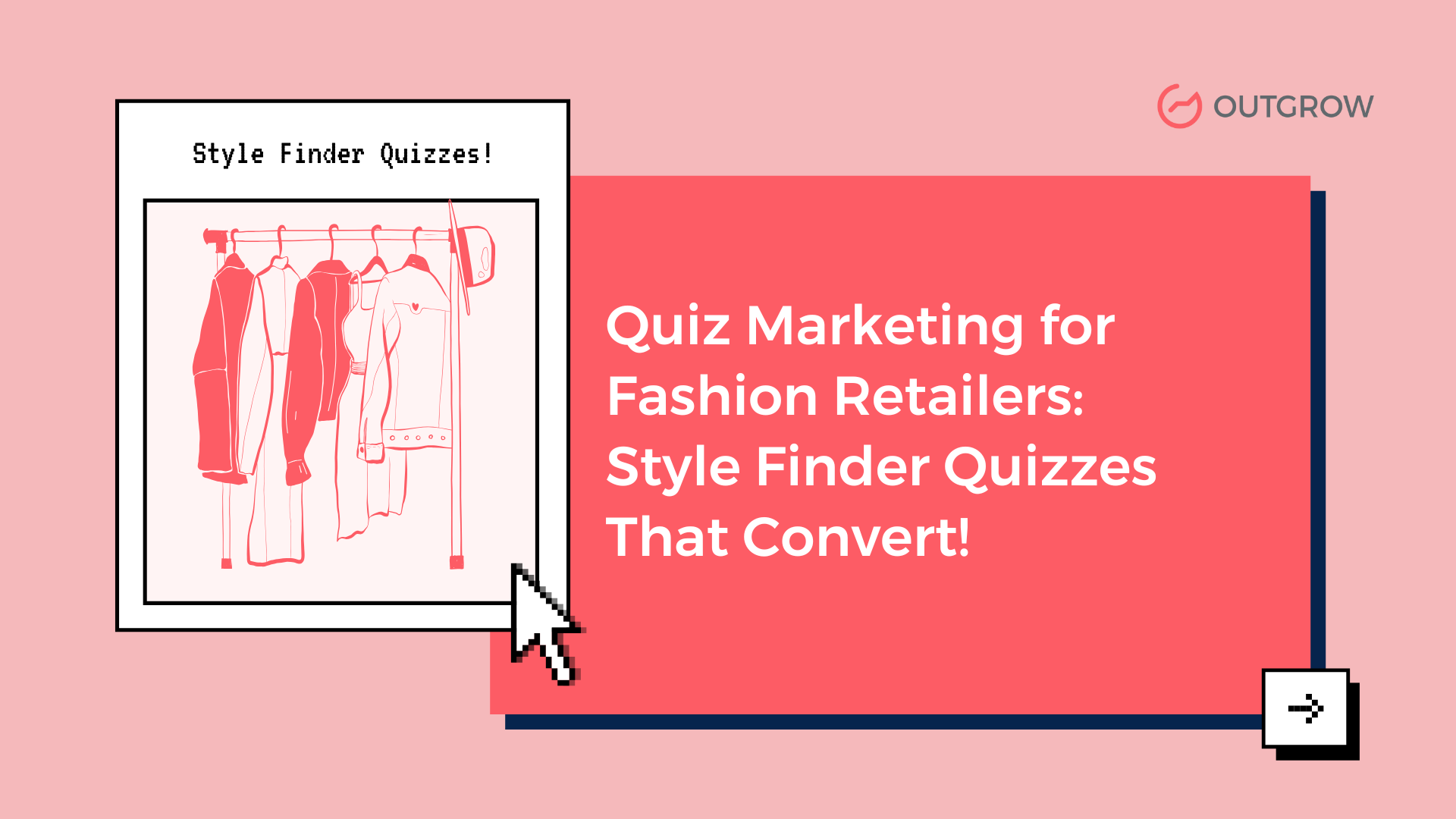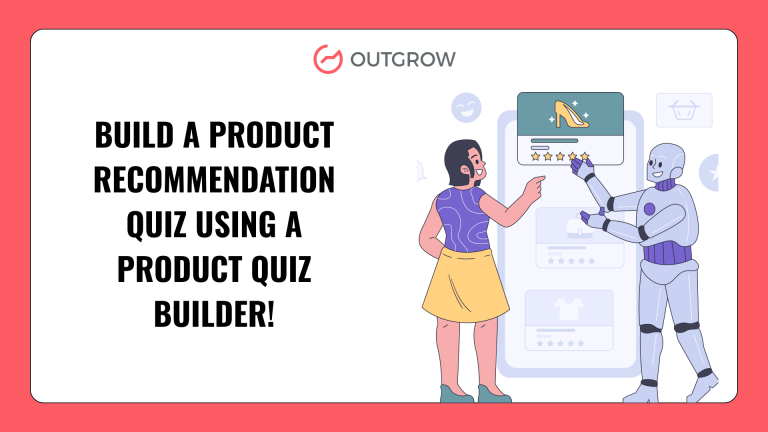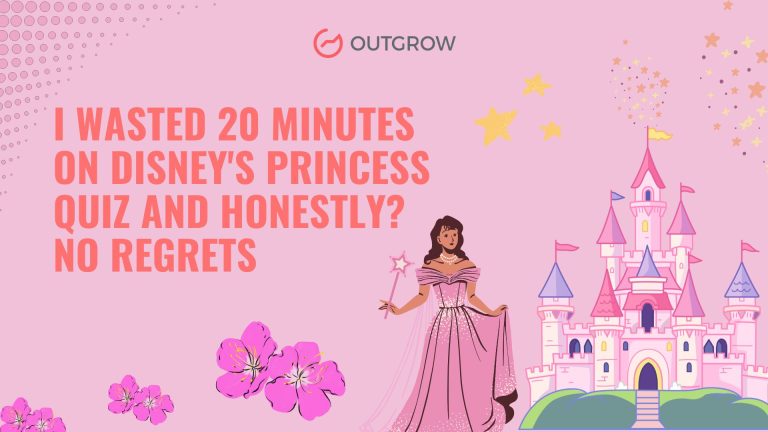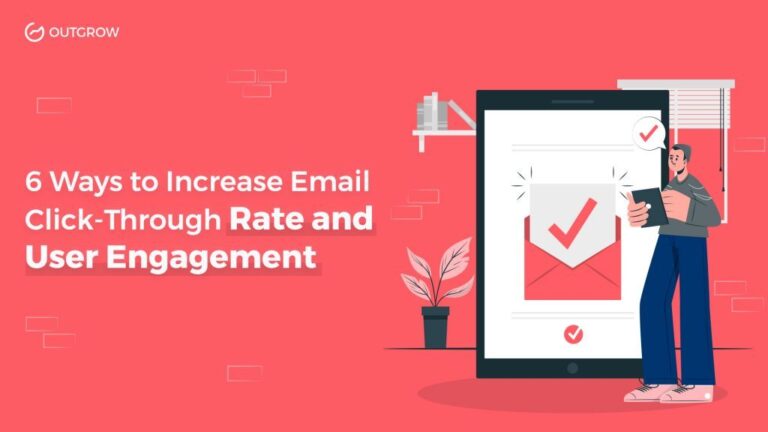You know that feeling when you walk into a store and the salesperson just gets your style? They pull exactly what you’d love without you saying a word. That’s the magic fashion brands are recreating online with style finder quizzes.
I’ve been tracking this trend for the past two years, and the numbers are wild. Fashion retailers using style finder quizzes see conversion rates jump much higher compared to traditional product pages. The best part? Your customers do most of the work for you.
Why Style Finder Quizzes Work So Well
Table of Contents
Think about shopping for clothes online. You scroll through hundreds of options, second-guessing every choice. “Will this look good on me?” “Does this match my lifestyle?” “Am I a boho person or more minimalist?”
Style finder quizzes flip this script. Instead of showing customers 500 dresses, you ask them 8-10 smart questions and serve up 3-5 perfect matches. The psychology here is bulletproof:
Personalization at scale: Every customer gets a unique experience without hiring 1,000 personal shoppers.
Decision fatigue killer: Choice overload is real. Quizzes eliminate 90% of options customers didn’t want anyway.
Social proof built in: When someone gets “You’re a Modern Minimalist,” they feel understood. That connection drives purchases.
Data goldmine: You learn customer preferences, style personas, size ranges, and budget brackets with every style finder quiz completion.
The Anatomy of a High-Converting Style Finder Quiz
After analyzing 50+ fashion quiz campaigns, the winners follow this structure:
Question 1-2: Lifestyle context. “What’s your typical Saturday look like?” “Where do you spend most of your time?”
Questions 3-5: Style preferences. Visual questions work best here. Show outfit inspiration or color palettes.
Questions 6-7: Practical details. Body type, fit preferences, and budget range.
Question 8-10: Personality reveals. “Your friends describe your style as…” “Your fashion icon is…”
The magic happens in the results page. Don’t just show products. Tell a story: “You’re a Classic Romantic who loves timeless pieces with feminine details. Here are your perfect matches…”
Case Study: How Stitch Fix Built an Empire on Quiz Data
Stitch Fix didn’t invent the style quiz, but they perfected it. Their 90-question style profile generates $2 billion in annual revenue.
Their secret? They treat the quiz as a conversation, not an interrogation. Questions feel natural: “How adventurous are you with fashion?” instead of “Rate your style risk tolerance 1-10.”
The results are hyper-specific. Instead of “casual style,” customers get “laid-back professional who loves comfortable fabrics and classic cuts with modern twists.”
Their quiz completion rate? 89%. Average time spent? 12 minutes. The payoff for that investment is obvious when you see their retention numbers.
Case Study: Bombas Socks and the Comfort Profile Quiz
You might think socks are socks, but Bombas proved otherwise. Their “Comfort Profile” quiz asks about foot shape, activity level, and comfort priorities.
The 6-question quiz takes 90 seconds and increased their email signups by 60%. More interesting: quiz-takers spend 40% more per order than regular shoppers.
Their approach is brilliant in its simplicity. Question 3 asks: “What’s your biggest foot frustration?” Options include “Slipping down,” “Too tight around calves,” and “Holes in toes.”
Each answer maps to specific product features. Slipping socks? They recommend their stay-up technology. Tight calves? Wide-calf options appear first.
Case Study: MM.LaFleur’s BENTO Styling Quiz
MM.LaFleur targets professional women, so their quiz focuses on work scenarios. “Big presentation coming up?” “Traveling for business?” “Casual Friday?”
Their 8-question assessment has a 71% completion rate and generates leads that convert at 23% (compared to 3% from regular traffic).
The genius move: they email partial quiz results to incomplete users. “We noticed you started finding your work style, but didn’t finish. Here’s what we learned about you so far…” with a link to complete.
This abandoned quiz recovery email has a 34% click rate and recovers 18% of incomplete quizzes.
Power Up Your Quiz Strategy with AI-Driven Tools
Creating effective style finder quizzes used to require a team of developers and months of testing. Not anymore.
Modern retail marketing tools make this process straightforward. You can build, test, and deploy personality-based quizzes in days, not months. The key is choosing platforms that understand retail psychology and provide built-in conversion optimization.
Outgrow’s AI Retail Marketing Tools: Your Complete Arsenal
Outgrow’s AI-powered retail marketing tools go way beyond basic quiz builders. This is your complete interactive marketing toolkit designed specifically for retail success.
The AI component isn’t just marketing fluff- it actually works. You input your brand voice, target customer profiles, and product categories. The AI generates quiz questions, personality types, and result descriptions that match your brand perfectly. No more staring at blank templates, wondering what to ask.
What you get with Outgrow’s retail suite:
Smart Quiz Maker: Pre-loaded with fashion psychology insights. The system knows to include lifestyle questions before style preferences, and automatically creates conditional logic based on your answers.
Live ROI Calculators: Show customers exactly how much they’ll save with your subscription service or loyalty program. One fashion subscription box client saw 28% higher conversions after adding a “cost per wear” calculator.
Interactive Landing Pages: These aren’t static pages with forms. We’re talking dynamic experiences that adapt based on how visitors interact. Someone browsing workwear sees different content than someone looking for weekend casual.
Smart Polls and Surveys: Get real-time feedback on new collections, pricing, or seasonal trends. The AI analyzes responses and provides actionable insights about customer preferences.
Conversational Chatbots: Address frequent sizing queries, returns, and product recommendations 24/7. Fashion-savvy retail bots are familiar with fashion jargon and can walk customers through size charts.
Forms and Funnels: Capture leads at all points in the customer journey. From newsletter sign-ups to VIP early access lists, every form is tailored to your own retail objectives.
Why Outgrow is Perfect for Retailers
Retail-Specific Templates: Generic marketing tools treat a fashion quiz the same as a B2B lead magnet. Outgrow understands that fashion customers make emotional decisions and need different psychological triggers.
Visual-First Design: Fashion is visual. Every template prioritizes images, color psychology, and visual hierarchy that make sense for retail brands. Your quiz can include outfit photos, color swatches, and lifestyle imagery that actually influences purchase decisions.
E-commerce Integration Magic: One-click integration with the major platforms. Quiz results automatically sync with customer profiles, and you can trigger abandoned cart sequences based on style preferences.
Mobile-Optimized by Default: 73% of fashion purchases start on mobile devices. All Outgrow templates function perfectly on tablets and phones without additional setup.
Seasonal Campaign Ready: Publish holiday style guides, back-to-school quizzes, or summer vacation packing lists in seconds. The AI converts existing quizzes into seasonal-themed quizzes without recreating them.
Brand Consistency Tools: One-time upload of your brand colors, fonts, and imagery. Each quiz, calculator, and landing page is automatically matched to your brand guidelines.
The best part? You don’t need a technical team to use any of this. The drag-and-drop interface makes sense to anyone who’s used basic design tools. But the backend intelligence rivals enterprise-level marketing automation platforms.
What sets retail-focused quiz tools apart is their understanding of fashion psychology. Generic survey builders don’t know that visual questions outperform text-only by 340% in fashion contexts, or that personality-based results increase sharing by 190%.
Advanced Quiz Tactics That Actually Work
Conditional logic is your friend. If someone says they’re pregnant, don’t show them fitted dresses. If they select “size 18+,” skip brands that don’t carry extended sizes.
Make results shareable. “I got ‘Edgy Minimalist’ – what’s your style persona?” drives organic reach. Add custom graphics for each personality type.
Follow up strategically. Don’t email quiz-takers immediately. Wait 2-3 days, then send “We found 3 more pieces for your style type” with different products.
Seasonal rotation works wonders. Update quiz questions quarterly. The summer quiz asks about vacation wear; winter focuses on layering.
Use quiz data for retargeting. Someone who got “Budget-Conscious Trendsetter” sees ads for sales and affordable fashion content.
The Technical Side Made Simple
Key integrations to prioritize:
- Email platform (for lead nurturing)
- Analytics (for conversion tracking)
- CRM (for customer segmentation)
- Social media (for result sharing)
Track these metrics weekly:
- Quiz start rate (traffic to quiz conversion)
- Completion rate (started to finished)
- Email capture rate (finished to email provided)
- Purchase rate (quiz taker to buyer)
- Revenue per quiz taker
Common Mistakes That Kill Conversions
Too many questions. Keep it under 10 unless you’re Stitch Fix with massive brand loyalty.
Boring results. “You like casual clothes” isn’t a personality. “You’re a Comfort-First Creative who values self-expression through thoughtful details” sells products.
No mobile optimization. 70% of quiz traffic comes from phones. If your quiz looks broken on mobile, you’re losing money.
Generic product recommendations. Don’t just show best-sellers. Show products that actually match the quiz answers.
Ignoring incomplete users. 40% of people start quizzes but don’t finish. Have a recovery strategy.
What’s Next for Fashion Quiz Marketing
AI is changing everything. Instead of pre-written quiz paths, smart tools adapt questions based on previous answers. If someone shows bohemian preferences early, later questions focus on that style direction.
Visual AI is getting scary good. Upload a photo of your current wardrobe, and quizzes will recommend complementary pieces.
Real-time inventory integration means quiz results only show available items in your size. No more “we love this on you, but it’s sold out” disappointment.
Voice quizzes are coming. “Alexa, help me find my style” isn’t science fiction anymore.
Getting Started Today
Pick one product category. Don’t try to create style finder quizzes for your entire store initially. Focus on dresses, or work wear, or accessories.
Write 8-10 questions that feel conversational. Test them on friends who fit your target customer profile.
Create 4-6 personality types with memorable names. “The Classic Professional,” “The Weekend Warrior,” “The Statement Maker.”
Build your quiz using a retail-focused platform that handles the technical complexity.
Test with a small traffic segment before rolling out site-wide.
Most brands see meaningful results within 2-3 weeks of launching their first style finder quiz.
Conclusion
Style finder quizzes aren’t a nice-to-have marketing tactic anymore. They’re becoming table stakes for fashion retailers who want to compete with Amazon’s convenience and local stores’ personal touch.
The brands winning with quiz marketing understand one thing: customers don’t want more choices. They want the right choices, delivered in a way that makes them feel understood.
Ready to create your own high-converting style finder quizzes? Outgrow’s AI Retail Marketing Tools make it simple to build, test, and deploy personality-based quizzes that actually drive sales. Sign up for Outgrow’s 7-day free trial today and join the fashion brands already seeing 40% conversion boosts.
Begin small, test repeatedly, and use customer data to drive your iterations. The fashion brands leading in 2025 are constructing these tailored experiences today
Keep it between 6-10 questions for optimal completion rates. Fashion quizzes can be slightly longer than other industries because style is inherently personal and engaging.
Aim for 60-70% completion rates. Fashion quizzes typically perform better than average because of high emotional engagement with the topic.
No. Let users complete the quiz first, then ask for their emails to receive results. This approach increases completion rates by 40-50%.
Absolutely. Small brands tend to beat big retailers with quizzes due to the ability to be more narrow and niche-driven in their personality types and suggestions.
The majority of brands report positive ROI in 30-60 days. Email subscribers from quizzes tend to have 2-3 times higher lifetime value than standard subscribers.
Sakshi is a digital marketing enthusiast passionate about connecting brands with audiences. With a background in content strategy and social media, she loves turning trends into actionable strategies. Outside of work, you’ll find her reading a book or hunting for the perfect cup of coffee.



![Outgrow’s Personality Quiz Templates You Need To Try [+Use Cases]](https://outgrow.co/blog/wp-content/uploads/2023/05/Blogs-min-1536x768-1-1-1.png)

